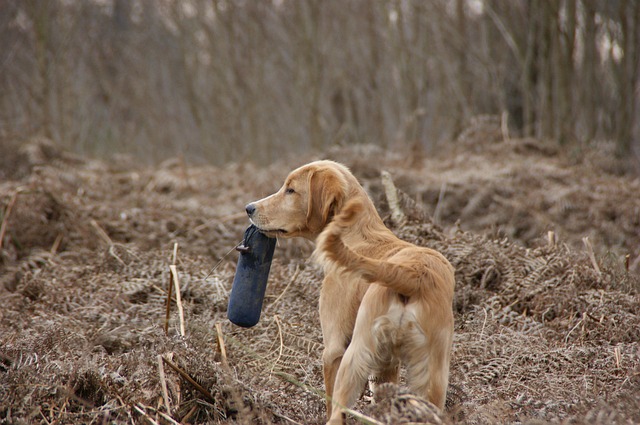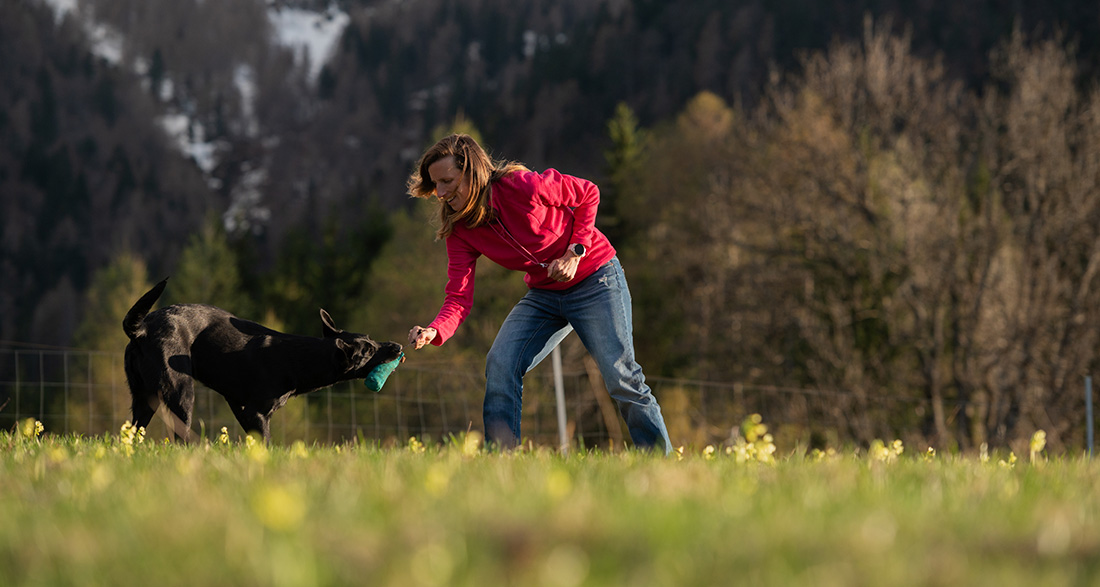Creating a real team with your dog and working on things together to grow is the dream of many proud dog owners. Especially for very active dogs seeking engagement, it makes sense to establish a form of collaboration between owner and dog that stimulates and exhausts the dog both mentally and physically. One popular activity for achieving this is dummy training, also known as retrieval work. Learn here how to skillfully transform your dog into a true retrieval master and why it is beneficial to integrate dummy work into your dog’s training plan.
What is Dummy Training?
Working with a dummy doesn’t just involve throwing an object, as some might mistakenly think, hoping the dog will eventually bring it back. Dummy training encompasses much more, allowing owners to engage in varied activities with their dogs that have many positive effects.
The use of a dummy with dogs originates from the hunting scene, where dogs are trained to bring back shot or fallen prey to the handler without causing harm, using a dog dummy or food dummy.
Well-trained retrieval dogs are still crucial in hunting to ensure all shot animals are found and can be processed without loss of meat or other valuable materials. Dogs undergo extensive and rigorous training, evaluated through various suitability tests.
For those who do not necessarily want to use a dog for hunting retrieval, dummy training doesn’t need to be as strict. The key is that both the dog and the owner enjoy it.
What to Consider in Dummy Training?
Sufficient Space:
If you want to engage in dummy training with your dog, choose a safe and open space where neither the dummy nor the dog can get lost. Large fields, for example, are well-suited.
Safety First:
Many dogs love balls, dummies, and retrieval games. If you want to train with your dog calmly and avoid biting accidents, choose a training spot where no other dogs are involved at the moment. Some dogs would go to great lengths to acquire a dummy. Additionally, there should be no other people, cars, or vehicles nearby during dummy training to avoid endangering your dog or anyone else.
Training According to Physical Condition:
Not every dog is equally well-trained. Some dogs need more exercise and training than others. Adjust dummy training to your dog’s physical condition to avoid overexertion.
Don’t Forget to Warm Up:
A dog’s muscles also need to warm up before reaching their peak performance. So, warm up your dog slowly before dummy training by taking a short walk for about fifteen minutes. Then start dummy training with initially gentle throws, progressing to longer, faster throws. This reduces the risk of injuries.
Attention to Weather:
Mild temperatures and dry weather are ideal for dummy training. Avoid training in strong sunlight and heat, especially to reduce the risk of overheating in the dog.
At What Age Can You Start Dummy Training?
As with many dog sports, it is essential not to start dummy training too early. The timing for dummy training and when to start depends mainly on genetics and size.
Small breeds should ideally be over 10 months old, but at least six months. Medium-sized breeds should be at least 12 months old, and large breeds, 18 months.
Building Up Dummy Work Effectively
If you want to teach your dog to retrieve, the following tips and tricks will help you see success soon:
- Make the dummy interesting for the dog by rewarding it as soon as it pays attention to or picks it up.
- Solidify the “drop” command so that the dog masters it confidently.
- Start training in a low-stimulus environment. At the beginning, it’s useful to secure the dog with a long leash to prevent it from running away with the dummy.
- Reward the dog immediately and enthusiastically as it comes to you with the dummy. This way, it learns that you won’t take the dummy away but that there’s always a good exchange.
- Initially, throw the dummy over a short distance, making it easy for the dog to follow. Then lure it until it comes to you with the dummy.
Tip:
The retrieval command to a dog is always supportive during retrieval training. Therefore, come up with a short, distinctive command that you repeat when instructing your dog to retrieve the dummy.
- Over time, you can increase the difficulty of the exercises by extending distances or placing the dog before sending it to search for the dummy.
- Always end the exercise with a particularly large reward, such as letting the dog eat from your food bag.
Tip:
Don’t train for too long. Short episodes of a few minutes with high concentration are more effective and promising. Each training session should end with success.
Which Dummy Is Suitable for Retrieval Work?
There are various dummies available. For beginners, food dummies are very suitable. You can fill them with food, making them emit the scent of the food and particularly attractive to the dog. You can directly reward the dog through the filling, quickly establishing a positive association between the dummy and the dog.

Generally, many things can serve as a dog dummy. Therefore, making a dummy yourself is not difficult. An old stuffed animal, a piece of fur, a dog toy – many things are suitable as a dummy for retrieval.
Important: The dog should not be able to injure itself on the dummy. Therefore, sticks or bones are unsuitable for dummy work.
Conclusion
Dummy training is a fantastic way to stimulate a dog both physically and mentally while strengthening the bond between the dog and its owner. There are few mistakes to be made in dummy work, making the exercises suitable for beginners. Dogs will love retrieving!


